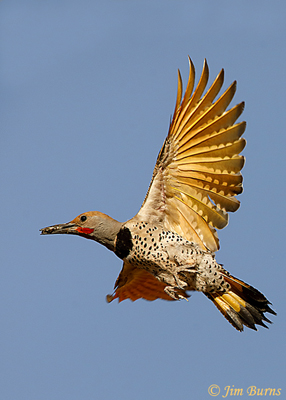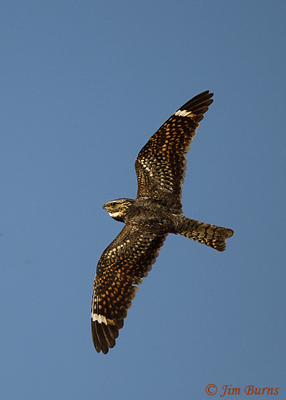
I’m standing on the edge of a draw which runs down from a cliff face where I’ve seen Red-tails nesting in spring and Prairie Falcons loafing in winter, but there are no raptors around today. My attention is focused on a hole near the top of a three-armed Saguaro nearby where I’ve noticed a pair of Gilded Flickers coming and going, arousing suspicions they may be nesting. Suspicions confirmed when I observed both male and female leaving the hole with fecal sacs.
Both parents have made several food deliveries in the cool first hour after sunrise, but as the desert heats up activity has slowed. The nestlings must be fairly young. No little heads appear in the Saguaro opening, and whatever the adults are bringing is too small for me to discern even through the telephoto lens, but I can see them reaching in and literally thrusting up and down as they stuff whatever it is, probably ants, grubs, and other small ground insects into tiny beaks in the nest.
Flickers are ant specialists, of course, and the front of their esophagus acts as a crop in which they can carry prey items to their young. This explains why, as I watch them on the lip of the hole, it appears they are working their throats back and forth and then seem to be regurgitating into the hidden nestling beaks. Flickers have the longest tongues in the woodpecker family, which in turn has the longest tongues in the avian world.
I hear the Cactus Wrens before I see them, not their harsh, ratcheting call made from a prominent high place, but their low, toneless buzz call. Two swoop down into a nearby bush, then a third. I have spent some time trying, but have never witnessed Cactus Wrens mating, but this spring I did see a territorial dispute in which one landed on top of another, held it down, and pecked it amidst dust and flashing wings. Two of the wrens in the bush drop to the ground, partially obscured from me, as the buzzing intensifies and wings are raised.
I assume this ruckus is about territory, but it could be copulation. I slide several yards sideways to better see beneath the bush where the action is taking place. As I raise the binoculars, I’m stunned to see a Lesser Nighthawk take wing. As it catches a breeze against the hillside and begins its familiar, moth like swoops and glides, I puzzle over why a roosting nightjar would raise the ire of the local wrens. Or how, in the dappled shade under the bush, they even noticed or recognized this avian epitome of cryptic coloration.
The wrens’ buzzing has attracted the flickers to the bush, but the nighthawk’s flight and soft calls have attracted a second nightjar, then a third plus a swarm of passing Rough-winged Swallows who immediately begin to strafe the larger birds. A pair of Ash-throated Flycatchers fly to the bush, calling. Avian chaos is erupting. My head is exploding. I dither about where to point the lens and decide nighthawks in flight trump everything and direct my attention skyward as the show unfolds.
Within five minutes the nighthawks have all settled in beneath different bushes, the Cactus Wrens have moved on, and all is quiet again. I exhale and scroll through the images on the back of the camera, the unanswered question still lingering—why would Lesser Nighthawks arouse the interest of desert passerines? Twenty-four hours later I was to find out. Read the next column in two weeks if you’re curious too.